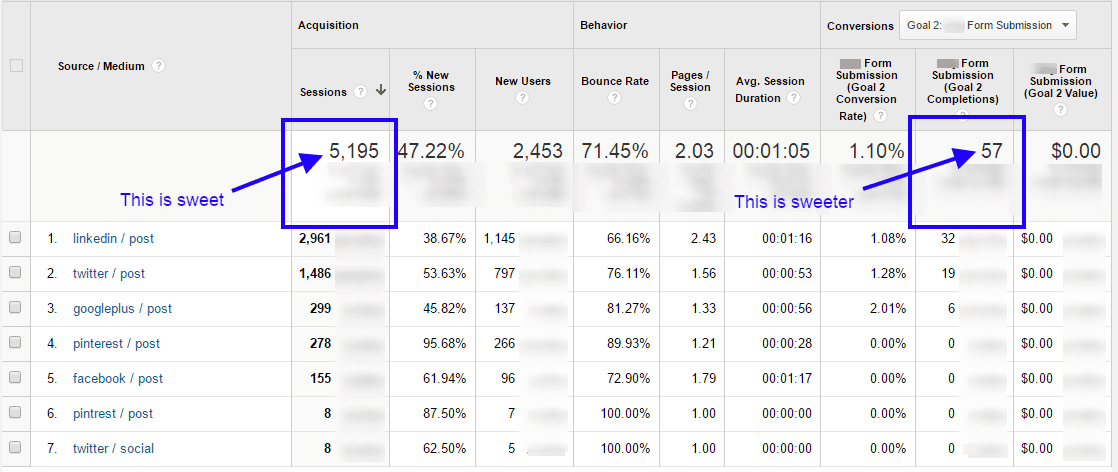Social media automation can be much more than just scheduling social media updates.
In fact you can use social media automation to test, document and improve your social media efforts.
It’s true, and in this blog post I will show you 4 different ways to utilize social media testing through social media automation.
Why You Should Test Using Social Media Automation
Since social media automation is scalable, it makes it a great tactic for testing various things on social media.
This is largely due to the ability to perform actions again and again with little or no effort.
Think about PPC (pay per click) ads.
Since social media automation is scalable, it makes it a great tactic for testing various things on social media.Click To TweetOnce setup, your ads are displayed again and again with no effort aside from making sure you can pay for them.
These ads can also have different variations which are perfect for running tests.
Same concept goes for social media automation.
Don’t Get Lazy With Documentation
Before we get into testing, it’s important to note that if you half-ass your documentation your results won’t tell you the complete story.
Depending on what you are testing, most of the the time you can use Microsoft Excel or Google Sheets to track your efforts. In some cases you can even use Microsoft Word or Google Sheets.
I prefer using a spreadsheet since it makes it easier to run formulas on the data.
Most of my documentation is done with Excel.
No matter what you use, the most important thing is that you are tracking your social media efforts.Click To TweetSo let’s get testing using social media automation.
A/B Test Social Media Copy
One of my favorite things to test with social media automation is various copy of my social media updates.
I find it is easiest to do this testing with Twitter. Although you can also do it with Facebook Pages or even Google Plus pages (if you are still active there).
The idea of this approach is to create 2-3 different social media updates to test.
These updates should be linking to the same URL.
A few ways you can test are:
• Different CTA’S (calls to action) – in your social media update you can try different CTA’S like “click here”, “read more”, etc.
• Attaching different images to see which generates more engagement
• Testing different content using the same images or CTA’S
Since you are using social media automation, to get enough data you will want to schedule these updates again and again over a few days or so.
If you have a large or engaged social channel, you can probably post each variation 5-10 times and have a good enough idea of which version created the most engagement.
Depending on what channel you were testing on, you will need to either export your data to analyze it, or manually sift through it online to find the data to put in Excel.
You will need to tally up the numbers for each variation in Excel to determine a winner.
Of course, you probably won’t ever reach statistical significance, but you should be able to see if one particular variation outperforms another.
If you are like me and post quite frequently, you might be interested in a more detailed approach of A/B testing with Twitter.
Test Bulk Following Approaches
If you use social media automation to bulk follow users on Twitter, why not test the different ways you go about following users?
For example, most people like to follow the followers of another Twitter account.
You can test which accounts you find followers from generate a better follow back ratio.
It won’t be 100% accurate, but with a little bit of documentation you can get a ballpark idea of new followers from you automation efforts.
The simplest approach would be to note the number of followers you have before starting (Column B). Be sure to note the name of the account you are following users of in the first column. Then input in Column C the number of new people you follow. After a day or two, look at your current follower count and note it in Column D.
In Column E use the formula (assuming your data is in row 2):
[perfectpullquote align="full" cite="" link="" color="" class="" size=""]=(D2-B2)/C2[/perfectpullquote]
Then follow another round of users from another Twitter account and do the same documentation.
I recommend bulk following a each Twitter user’s following at least 3 times to get a decent mix of data.
Upon conclusion, you can sum up the results for each account to determine if one account outperforms another in regards to users who follow back.
I would remove the lower performing Twitter account and find a new account to mass follow users of.
You don’t have to be limited to just following another accounts followers.
In fact, you can use this same approach for:
• Hashtag searches
• Searches for Geolocation
• Users an account follows
Of course if you want to be a little more accurate with your data, you can use this nifty Google Doc that can scrape your followers and users you are following. There is a tab for people you are following (friends) and those that are following you (followers).
You’ll need to run this immediately after you follow a bunch of people to create a list of people to see if they follow back.
After a day or two, you’ll want to run the spreadsheet for your followers.
In your “Following” tab, you will need to insert a new column on the end and add this formula into row 2:
[perfectpullquote align="full" cite="" link="" color="" class="" size=""]=IF(INDEX(Friends!$B$2:$B$100000, MATCH($B2,Friends!$B$2:$B$100000,0))=B2,"Yes")[/perfectpullquote]
Then drag down the formula the rest of the way.
If that column shows a “Yes”, then that means they are following you back. Simply filter the column to show only “Yes” results for the range of followers you were following. Then add the number of yes results to your documentation to see the percent of users who followed you back.
Test the Best Time(s) to Post on Social Media
When using social media automation, you can easily find out what the best times to post on social media are.
This works particularly well on Twitter.
Using social media automation, it is relatively simple to find the best times to tweet.
It really comes down to utilizing automation to post again and again as well as proper documentation.
With this testing approach, you will spend at least 2-3 weeks posting at different times. Over the course of this time, Twitter Analytics will track various metrics of each tweet.
After a few weeks, you’ll analyze this data to identify the times that drive the most engagement for your Twitter account.
Unlike most of what you read about when the best time to tweet is, these times will be based on your actual data and engagement providing the most accurate insight you can get.
Even though this data will be Twitter based, the same approach can be taken on other channels that provide analytics.
Find Out What Social Media Channels Drive the Most Engaging Traffic
Social Media automation is perfect for getting the most out of promoting your evergreen blog content.
I suggest you check out this blog post if you are not familiar with using social media automation to promote evergreen blog content.
One cool thing about combining social media automation, evergreen content and proper social media tracking is that you can see what social media channels drive the most leads.
In order to do this, you will need to utilize UTM parameters on your social media updates.
If you are not familiar with UTM parameters, they are basically tags that are attached to a URL which will pass specific data into your Google Analytics account.
By properly using these on each social media channel, you will be able to see not only what channel is driving traffic from your efforts, but which ones drive the most leads.
Here’s how to setup social media tracking for your updates.
Using this approach for your evergreen content will let you test which social media channels truly provide traffic of users who take action on your website.
You’ll be able to see where you should be spending more time increasing your social media engagement.
Are You Using Social Media Automation For Testing?
Knowing that there are at least 4 different social media testing techniques used with social media automation, are you currently using any?
If so, which ones?
If not, do you plan on incorporating it into your social media strategy?
Let me know in the comments below.





